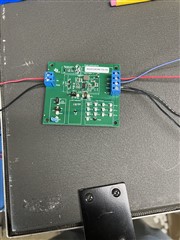Other Parts Discussed in Thread: BQ24133, EV2400, BQSTUDIO
Tool/software:
I have the BQ24133EVM-715-15V and am supplying 16V in, following the user guide "bq24133 User's Guide" I got it working perfectly but after 2 uses of only running it for about 20min total the VSYS now reads 2.0V when a battery is not connected and when a battery is connected it reads the batteries voltage when measuring with a multimeter from a gnd pin and VSYS. I thought maybe somehow I damaged the device so I purchased a second eval board and have the exact same issue the board works fine and out of nowhere stops working. It is as if the path from Vin to VSYS is broken but I cannot figure out why it is reading 2.0V at all. Could something be wrong with the fets? Anyway to prevent or fix this issue?





